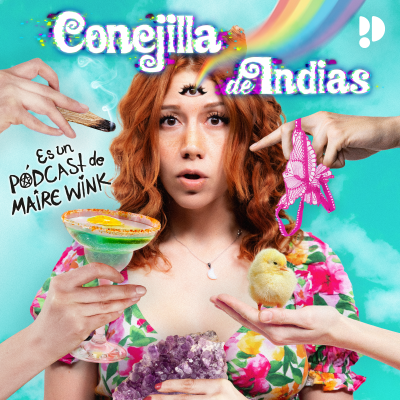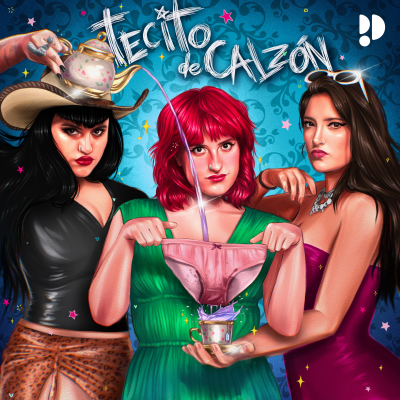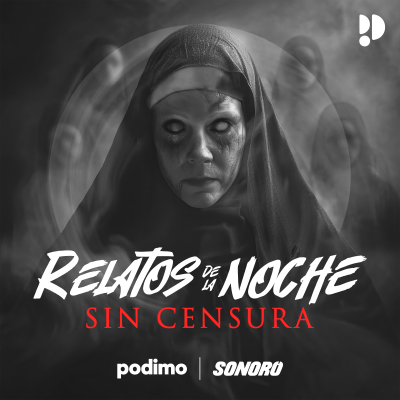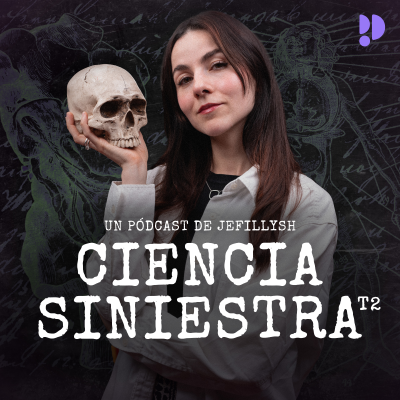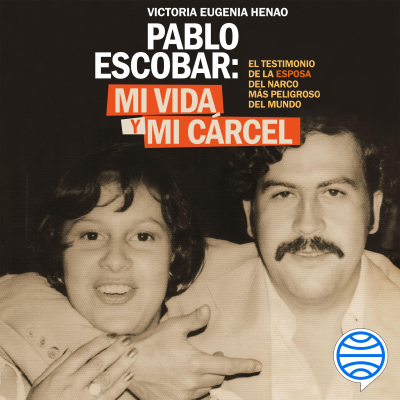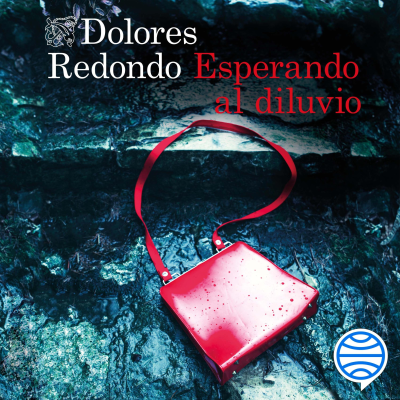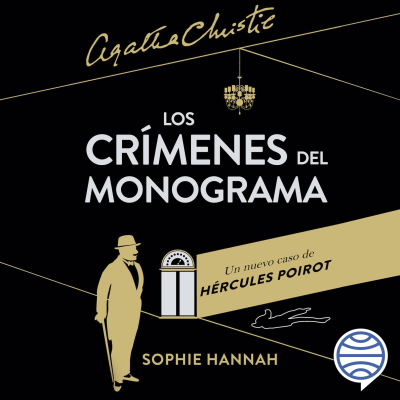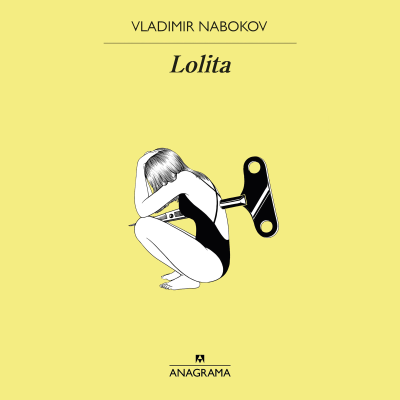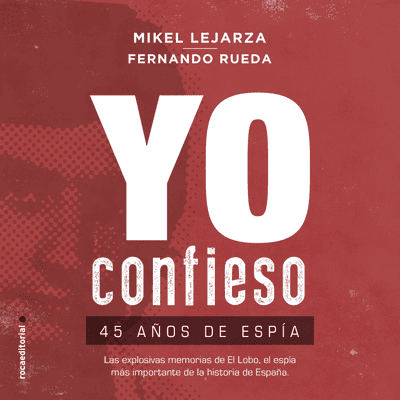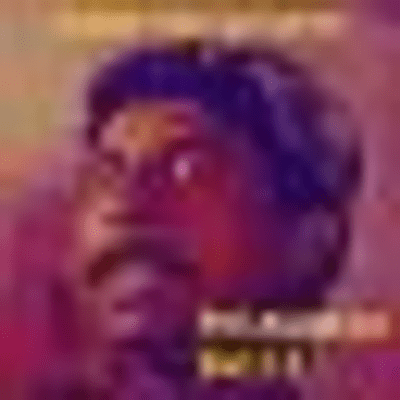
Totally Filmi presents Polandine Patti
inglés
Cultura y ocio
Empieza 7 días de prueba
$99 / mes después de la prueba.Cancela cuando quieras.
- 20 horas de audiolibros al mes
- Podcasts solo en Podimo
- Podcast gratuitos
Acerca de Totally Filmi presents Polandine Patti
~~~
Todos los episodios
19 episodiosPolandine Patti Episode 19
With this episode, we begin a look at Malayalam films centred around the sea, and examine the importance of the sea to those that live near it and from it, and examine the sea as a metaphor. Download Episode 19 [https://polandinepatti.toutes-directions.com/PP_Episode_19-2022-07-31_The_Sea_1.mp3] Episode 19 Highlights: Spoiler Alert! We try to remember to alert listeners to spoilers, but just in case, know that we talk about the films in-depth, so be sure to watch them first if you’re concerned about spoilers! While we didn’t get to mention this in the episode, Harsha recommends the podcast “Rethinking ‘Keraleeyatha’: Centering Oceanic Histories [https://alablog.in/issues/47/rethinking-keraleeyatha-ocean-history/]” as an excellent companion to our series on The Sea. [00:00:17] Spoiler Alert! [00:01:33] We will start with Chemmeen and it’s important to note that the personification of the sea, Kadalamma (lit. Sea Mother), is revered in many fishing communities shown in these films. [00:02:43] Chemmeen is a huge milestone for Malayalam cinema. It’s the first Southern film to win the National Award and frequently mentioned in lists of the best 100 Indian films. Alas, good prints with subtitles have been hard to find. [00:03:14] There have been critiques in recent years from the community depicted in the film that it’s a regressive and unflattering portrayal of them. [00:03:40] The film is an adaptation of a novel by Thakazhi Sivasankara Pillai and centered around a belief that a fisherman’s fate is dependent on his wife’s chastity. [00:04:00] The story is about Karuthamma, played by Sheela, who is in love with the wealthier Muslim, Pareekutty, played by Madhu. Her ambitious father tasks her with getting money from Pareekutty for his own boat and nets. Pareekutty agrees with the understanding he is able to sell the catch for them. [00:05:18] When Karuthamma’s father becomes successful, he marries her off to a man who is able to live with her family and join them in the business. [00:05:45] So much pining [00:06:20] Karuthamma tries to be loyal to her husband but the tragedies start on her wedding day, along with the rumors following her about her relationship with Pareekutty. [00:07:22] Harsha always found the movie hard to get into. It might be partly because Thakazhi is not from the community he is writing about. [00:08:53] The music is beautiful. You don’t see these big orchestrations today. [00:09:20] Katherine finds Madhu gorgeous. Harsha finds Sathyan’s acting more accessible. [00:10:48] There’s a lot of sadness and loss in the story. Stories about marginalized groups in the mainstream often portray them as happy people despite their poverty and marginalization. [00:11:58] Bobby, in Hindi, has a similar portrayal of Christian fishing communities. [00:12:23] In Malayalam, the problematic depiction of fisherman is an issue of caste more than religion. [00:13:15] When your way of life centers on something as unpredictable as the ocean, it makes sense to have superstitions and beliefs built around it as a means to control the uncontrollable. [00:13:55] North American coastal homes often have something called widow’s walk, a balcony intended for sailors’ wives to look out for their husbands who have been lost at sea. [00:14:30] In Ireland, there’s a myth that Aran sweaters were supposed to have unique stitches for each family and drowned men were identified by the stitch used by the women in their family. [00:15:03] The film’s legend persists because of the National Award and because of the crew, including Hrishikesh Mukherjee and Manna Dey. [00:16:20] There’s a pre-Chemmeen Malayalam cinema and a post-Chemmeen Malayalam cinema. In the film Celluloid, the Father of Malayalam Cinema, JC Daniel, is depicted hearing the news of Chemmeen’s win with a mix of pride and sorrow. [00:17:45] Celluloid’s thesis about the need to honor our film histories is relevant to Chemmeen. The lack of investment in remastering and making it more widely accessible means it could be lost in time. [00:18:40] There is a chance before Madhu, who is 90 in September 2023, and Sheela pass to capture their experiences in a documentary or oral history project. [00:21:05] The film required a high level of national, or “pan-Indian,” cooperation to make. [00:21:42] Lots of movies are 50 years old so it’s important to provide context on why this particular film turning 50 is important to venerate. [00:23:41] This is a great example of the sea as a metaphor for the lives of people who live off it. [00:23:47] Chemmeen also sets a template for the depiction of Kerala’s fishing communities in Malayalam cinema [00:24:05] Thumboli Kadappuram is our next film and it’s very different in tone, including comedy. [00:24:40] Two fisherman, Methrinju and Williams, played by Vijayaraghavan and Manoj K. Jayan, respectively, are rivals in their fishing community. The locals look up to Methrinju. His love interest, Clara, is played by Silk Smitha. [00:25:28] When Williams elopes with a wealthy man’s daughter, Mary, played by Priya Raman, Methrinju offers them sanctuary in his home. [00:26:26] Soon, the community begins to circulate rumors that Mary is having an affair with Methrinju when Williams is at sea. [00:26:48] Katherine’s previous experience with Jayaraj has been his artsier fare. This is a massy film. [00:27:37] Silk Smitha’s important role also surprised Katherine. Harsha is surprised at her contemporary reputation as just an item girl when she’s done significant roles in films like Spadikam. [00:29:42] Williams and Mary’s meet cutes are shot beautifully and Jayaraj shows off his artier skills. [00:30:39] The character of Stanley/Chellappan is the kind of 90s comedy character that is jarring to those of us watching in the 2020s. [00:31:36] When fishermen in film are depicted as the epitome of bravery and masculinity, anyone who deviates from that, like Indrans’ character or the lead in Chandupottu, is mocked for their femininity. [00:32:13] We are so glad Indrans can play more full-fledged roles now. [00:32:37] Harsha enjoys Priya Raman from among the early 90s heroines who were not the big stars like Shobana, Revathy and Urvashi. She is now known more as a television serial actor. [00:34:11] The cast includes actors like Augustine and Sainuddin, both of whom have passed away. Others like Prem Kumar and Manoj K. Jayan were omnipresent in Malayalam films of this era and did not transition into New Gen films. [00:36:18] Malayalam films in the 90s employed huge casts of character actors to give them that lived in feeling while telling the story of a hero and heroine. [00:37:36] Harsha believes one of the reasons Bollywood films are struggling recently is because of the lack of a world that feels lived in and familiar populated by tangential characters. [00:37:52] We discuss Anurag Kashyap’s comments on rootedness in South Indian cinema. [00:41:07] Bollywood is stuck between a rock and a hard place addressing the current Indian social context. They would prefer to exist in a timeless, placeless urbanism. [00:42:52] Were fisherfolk in the 90s still talking like they were in Chemmeen and not using motorboats? [00:44:00] Our next is Puthiya Theerangal, directed by Sathyan Anthikkad and his moral values. [00:44:58] The main character, Thamara, is played by Namitha Pramod. She’s an orphan and fisherwoman, who finds and takes in an old man, played by Nedumudi Venu. Nivin Pauly plays her friend and love interest. [00:47:22] Thamara going out fishing on her own boat is a marked difference from the other stories. She is supported by her community and thrives, despite being an orphan. [00:48:12] Sathyan Anthikkad’s characters often survive with the goodwill of the community. [00:49:02] There are references to Chemmeen, once again showing its long shadow. [00:49:35] Nedumudi Venu’s character is written as a plot device. He has little agency. [00:51:10] This is not a Nivin Pauly film. He’s the eye candy. [00:51:28] Once again, we see frequently seen elements like fishermen who have an interest in the arts and theater and the sea taking loved ones away. [00:52:56] Namitha Pramod was a young teenager when she starred in the film. She hasn’t really acted much once she became an adult. We previously discussed her in Al Mallu. [00:54:33] We both thought that it fell apart in the second half. [00:55:01] Rajagopuram, shot in Hampi, is very pretty. Cinematographer Venu shot the film with a lot of color. It was a bright spot in our series on the sea, which can often be bleak. [00:56:23] Next time, we discuss Mosayile Kuthira Meenukal, Akashathinte Niram and Amaram.
Polandine Patti Episode 18
We conclude our series of Malayalam supernatural films — in this episode, we look at Ennu Swantham Janakikutty, Mayilpeelikkavu, and Bhoothakaalam. Download Episode 18 [https://polandinepatti.toutes-directions.com/PP_Episode_18-2022-07-10_Supernatural_4.mp3] Episode 18 Highlights: Spoiler Alert! We try to remember to alert listeners to spoilers, but just in case, know that we talk about the films in-depth, so be sure to watch them first if you’re concerned about spoilers! [00:00:20] We’re back with a final episode about supernatural films in Malayalam cinema. [00:00:25] We started off planning this episode around two Jomol films, Ennu Swantham Janakikutty, Mayilpeelikkavu, but also decided to add in a more recent film, Bhoothakaalam. [00:00:44] Katherine has learned more about yakshis through this series looking at supernatural films. [00:00:48] As an outsider to a culture, it’s sometimes a challenge to understand things that are so ingrained in a culture that everyone who is part of that culture would immediately pick up on the cues. [00:01:03] Katherine was searching for “movies with yakshis”, and feels that the movies that have “yakshi” in the title are often not great films. [00:01:21] Katherine and Harsha realized that Katherine was missing out on yakshi films when it wasn’t expressly stated that this was a yakshi – like in Manichitrathazhu. But now that Harsha has helped clarify what to look for, Katherine is seeing yakshis everywhere. [00:02:02] Harsha sent Katherine a list of yakshi movies, and a music video that has a yakshi theme. Check the end of these show notes for the list of films and a link to the music video. Without Harsha’s guidance, Katherine wouldn’t have had a clue that Ennu Swantham Janakikutty was a yakshi film. [00:02:25] Harsha notes that Mayilpeelikkavu is a reincarnation film, and not a yakshi film. [00:02:40] Harsha watched the short film called Yakshi on YouTube, and made the connection that yakshis and chudails are pretty much the same thing. [00:02:50] “Chudail” in Hindi films is always translated as “witch”, but you realize they both pretty much have the same characteristics, except for the feet, which are backwards in chudails. Both terms, yakshi and chudail, have been used to curse women. Previously, Harsha only thought of yakshi’s as a Kerala – and specifically a southern Kerala – thing. [00:03:23] The figure of the vengeful woman is common in supernatural stories across the world. [00:03:45] Katherine realized that she was looking at things through a very narrow lens, and recognizes she was missing details because horror and supernatural are not genres she watches a lot of, nor knows a lot about. It’s also a good lesson in how we, as outsiders, can miss things in another culture. [00:04:25] We decide to start our discussion with Ennu Swantham Janakikutty in order to keep going with our yakshi theme. [00:04:29] The film is from 1998, and stars Jomol along with a number of marquis names, plus a script by M.T. Vasudevan Nair. It’s directed by Hariharan and produced by P.V. Gangadharan, names associated with classic films such as Oru Vadakkan Veeragatha and Kerala Varma Pazhassi Raja, especially if you’re thinking about very literary, dense Malayalam films. [00:04:58] Katherine notes, as an aside, that this is another example of Scube having the rights to a lot of really excellent films, and again she begs for them to add subtitles. But you can find the films on their YouTube channel. [00:05:30] The film is about a young woman who is living with her extended family in the trope many viewers will recognize as the traditional tharavadu (ancestral home in a joint family system). In this case, it’s very a much a matrilineal tharavadu, [00:06:38] What were the clues to this that Katherine picked up on? A household full of a lot of women. There are age clusters of the women, so she figured some of these would be mothers, some would be aunts, some would be daughters and nieces and cousins. So she was looking at the group of women and the cluster of ages to come to this conclusion. [00:07:25] What Katherine did not pick up on is the fact that the grandmother in the film is not Janaki’s actual grandmother, she’s her grandmother’s older sister who has fallen out with her own children, so she comes to stay with her niece. [00:07:45] Janaki calls her “muthassi”, because all of the sisters’ kids basically look on the mothers’ sisters as interchangeable mothers. [00:08:23] It’s very matrilineal, though there is one male figure who is there and complains about the fact that there’s the old woman who fought with her kids. He’s the son-in-law who would have married into the family. [00:08:43] Their matrilineal traditions are the reason why they take care of her. [00:08:48] Jannakikutty is going through adolescence. She’s developing her first crush, but she’s very awkward and doesn’t seem to have a lot in common with the other young females around her. She really bonds with her great aunt and comes to hear the stories we’ve come to expect from Malayalam movies about yakshis that get passed on from generation to generation. [00:09:23] Janakikutty starts meeting this woman in the woods who we’re led to believe is some sort of supernatural entity, because she comes only when Janakikutty is alone. [00:09:40] Janakikutty has a crush on a young man who is around the family, and the woman she meets, Kunjathol, played by Chanchal, schemes to help Janakikutty to get what she wants. [00:09:58] The young man Janakikutty has a crush on is secretly in a relationship with one of Janakikutty’s cousins. Part of Janakikutty’s stress/distress is because she discovers the guy she has a crush on is interested in her cousin, and not her. [00:10:50] Janakikutty’s muthassi tells her yakshi stories and has a book of yakshi stories that she gives her. [00:10:55] As a young woman, growing up in this part of the world, you would assume that it’s the stress of adolescence that is triggering this mental breakdown (or whatever you want to call it). [00:11:15] Katherine saw a description of the film, when she was trying to find out more information about it, that said it was the first Malayalam film dealing with schizophrenia, but Katherine didn’t feel that was really what was going on in the film. [00:11:30] Harsha feels it’s more like Janakikutty’s manifestation of a poltergeist. Poltergeists always show up in homes with adolescents, especially young women. They tend to cause a lot of chaos, which is resolved once the kid is past a certain age, and are mentally more stable. So you can think of Kunjathol as a poltergeist instead of a vampire in this context, even though she has some vampiric features. [00:12:20] This is not a scary film, it’s more psychological, but there is a moment in particular where Kunjathol is very frightening. [00:12:30] At least two of the films we’re looking at in this episode deal with how a person’s psychological stress affects them, and how that gets manifested as some kind of supernatural vision. [00:12:50] There are points in this film where other members of the film kind of catch Janakikutty apparently talking to herself, or laughing to herself, when what she’s imagining is that she’s talking to Kunjathol. [00:13:06] Harsha is not perfectly sure whether this is all just supposed to be in Janakikutty’s head, or if only she can see the yakshi. Harsha doesn’t necessarily believe in ghosts, but she likes the idea of the poltergeist as an external manifestation of somebody’s distress. She’s very open to that interpretation in movies, that something can both be in someone’s head, and can be supernatural at the same time. [00:13:43] Katherine notes that a lot of the yakshi films she turned up were more about vengeful women preying on men (sometimes with a sexual undertone), so what she liked about this film was that Kunjathol doesn’t fit into this pattern. Yes, she is a vengeful woman (as the film reveals), but what she does is show up when Janakikutty needs her (like the idea of the poltergeist). Janakikutty needs the support. [00:14:33] For Harsha, this is why, as a yakshi film, this film really stands out. The romance element is only given weight because of how Janakikutty feels about her crush and her cousin’s relationship with him. He doesn’t have a lot of personality, he is just the object of her desires. [00:15:00] Katherine notes that’s often what it’s like for an adolescent girl having her first crush. It’s an overwhelming emotion, and at times you might be projecting things on the object of your affection that don’t exist at all. She gives a lot of meaning to things like the Cadbury chocolate bar he gives her. [00:15:43] He overlooks her, and gives her the chocolate bar because he sees her as a kid, but it becomes this overblown thing in her mind. Janakikutty’s isolation is emphasized. She doesn’t really have anyone to tell her that he’s not really into her, and to point out the really obvious things that are going on around her. [00:16:15] She’s very isolated, and her central relationship is with her elderly great aunt as well as her vampire friend, and her vampire friend’s friend. There is such a strong female central relationship in this film, and the movie stands out because of this. [00:16:55] Jomol won a Special Mention at the National Awards for this film. Katherine is frustrated that this film isn’t subtitled so she could share with people. It ends up being overlooked except by people who understand the language. [00:18:09] Harsha feels that this film and Nandanam are very similar movies because of their connections to a supernatural entity, the relative loneliness of the main character, they can only turn to the supernatural entity for solace. [00:18:41] Karineeli, the friend/aide to Kunjathol, is a very popular and identifiable yakshi character in Malayalam folklore, so anyone encountering her in this movie would be very familiar with her as a yakshi figure. Janakikutty, as someone familiar with this lore, is pulling in all these details to create this very vibrant inner life. [00:19:25] Kunjathol is a glowing, beautiful figure. Her hair, her sari is luminescent — she’s a very vibrant part of Janakikutty’s imagination in what is an otherwise dull life. [00:20:05] Katherine feels this interpretation of a lonely, isolated adolescent reaching for a very vibrant inner life to help her navigate what’s she’s going through, makes more sense than any schizophrenia interpretation. [00:20:45] Harsha compares it to her experience at the age of twelve, emigrating and being very lonely as a teenager, and internet hyperfixations were a way to cope with it. This is Janakikutty’s hyperfixation, and it seems very natural and beautiful and organic — it’s not scary or threatening. She feels that it’s not threatening because this is not M.T. Vasudevan Nair framing this as a story of “what do women get up to in their minds?”. Contrast the way we see Ganga’s connection to Nagavalli in Manichitrathazhu – because she’s an adult, her hyperfixation is more worrisome. [00:21:45] This very strong connection is not depicted as a negative for Janakikutty, and that’s probably why it’s not threatening. Yakshi’s are not only representative of female sexuality, they’re also representative of female bonding, which is threatening to a patriarchal culture. This movie, though, portrays it as not threatening. [00:22:24] If you want to see a happy yakshi movie, this would be the one to watch. There is a thread of sadness in the film, because Kunjathol has this tragic story, but you can also see why this kind of tragic figure would also appeal to a teenager. [00:22:40] Teenagers act like this today (in terms of parasocial relationships and hyperfixation), but they’re accessing different stories. [00:23:05] Harsha always thought of the movie as pleasant to watch, and extremely relatable. But talking about it on the podcast, she realized the reason was that it was a teenage hyperfixation. Janakikutty is telling her problems to this extremely empathetic figure who just wants to help her figure out her teenaged life’s problems. If she were an actual ghost with a real agenda, she’d be out there murdering people. [00:23:44] Katherine notes there’s a moment where the sister gets married, and that’s the moment where we see the yakshi get very intense, and her incisors come out. Nothing serious really ends up happening in that moment, but we can see that for the yakshi, it relates to her own incident and how her life ended up being so tragic. [00:24:10] We don’t realize it at first, but the grandmother figure/great-aunt has died while they are all at the wedding. She doesn’t attend because she’s had some kind of incident, but they also don’t want Janakikutty at the wedding. Janakikutty tries to wake her, but we as an audience perceive she has died. However, suddenly her eyes fly open, and she runs to the wedding, which she couldn’t have done. Janakikutty follows her, and they arrive to find the yakshi at the wedding. [00:25:35] Harsha always assumed that the family didn’t want Janakikutty at the wedding because of her erratic behaviour (in their eyes). The other thing is that with Kunjathol being the vessel for providing empathy for Janakikutty, this allows her to see that her cousin is being put through something really unfair, even though it clears the way for Janakikutty with her crush. But the cousin’s wedding is really tragic in its own way. [00:26:08] At one point, Janaki realizes that the object of her crush isn’t interested in her, and she tries to help her cousin, but it doesn’t work. It’s a huge step in her growing up – through the move, we see her learn to accept things. It might be a little cinematic at the end when the crush likes her back, but Harsha puts this down to film needing a kind of “bow-tie” at the end. Has Janaki learned that as an adult, you don’t always get the things you want? [00:27:23] We turn to the next Jomol film we’re going to talk about in this episode, Mayilpeelikkavu. This is a much more mainstream film. It came out in 1998 as well. [00:27:50] Harsha has always assumed they cast her in Mayilpeelikkavu because she started out in a supernatural film, and they liked her for that kind of role. Except, she plays a very different character here: it’s a typical kind of mainstream heroine role, with a gaggle of young kids around her constantly. But for Harsha, she doesn’t care for Jomol in those kinds of roles. Jomol is amazing in movies where she has to be a little awkward, like in Niram. For Mayilpeelikkavu, it feels like they wrote a role for Shalini and not Jomol. [00:28:50] The set up is very reminiscent of Aniyathipravu. [00:29:05] The film sees Kunchacko Boban and Jomol playing characters staying in the same house for vacation, and they’re both have dreams about a person coming to kill them. Or are these memories of a past life? They slowly discover that they were lovers in a past life. She was murdered, and he was framed for the murder. The same person from their past life is now out to get them in their present life. [00:29:45] It’s a reincarnation story, and the other people involved in this story are still alive and in the household. There are some deceptions around who the killer really is, that set us up for a twist at the end. [00:30:05] Thilakan plays a character that is similar to the one he played in Manichitrathazhu. Katherine felt this film was like a cousin to that in some ways: it’s a traditional household with lots of people in the house, and things are happening. There’s a mystery and some kind of supernatural things going on. She sees parallels between the two films. [00:31:35] Katherine found herself surprised by Thilakan’s character, expecting him to be very much like the one in Manichitrathazhu. SPOILER: Thilakan’s character is the murderer. [00:32:05] Harsha notes that in these kinds of films, a lot of the same actors get cast in similar types of roles. We’re supposed to pull from our historical film knowledge to understand the type of character they’re playing, so it’s logical to make an assumption about Thilakan’s character. Katherine thought the plot twist around his character was great, though. [00:35:00] Harsha is amused by the fact that even after many years, someone will have the same hairstyle, and no one seems to recognize them. And why do movies that are otherwise complex assume we won’t recognize a character if they don’t give them the same haircut? [00:035:45] Katherine generously argues that perhaps because the haircut has us make an assumption about the culprit, the twist becomes more impactful. [00:35:55] Harsha enjoyed the twist at the end, but she also enjoyed the songs and the background track, which gives spookiness to the movie. [00:36:07] The flashbacks are made to look visually distinctive either through black and white or sepia colouring. [00:36:28] The film is otherwise quite colourful – it’s constantly popping with colour, perhaps because it’s a more mainstream movie than Ennu Swantham Janakikutty. It’s a very accessible mainstream movie, much less scary than films like Manichitrithazhu. [00:37:15] Except in a film like Ennu Swantham Janakikutty, Jomol is not great as a lead heroine. But the fact that she’s paired opposite Kunchacko Boban and surrounded by a big cast allows her to be more integrated into this film despite all of that. Katherine also felt she was better in the flashbacks to the past, though Harsha notes that both actors are wearing brownface in the flashbacks and it is very distracting. It also makes no sense in the context of the story: why did they have to be darker skinned? And why did they have to have completely different hair texture? [00:38:20] Possibly the only reason for this is to differentiate them from their present day incarnations, which is maybe not a great excuse, but could be an explanation. However, the guy we’re supposed to think is the murderer gets to keep his same haircut after fifty years. [00:39:02] It really is an interesting film to watch and compare with Manichitrathazhu. Harsha wonders if there were any of the same kind of yakshi bits as there were in Manichitrathazhu? Katherine says no, but instead there’s a serpent shrine. The film’s title also reminds us that this shrine is also covered with peacock feathers. But no yakshis. It’s fully a reincarnation/revenge movie. [00:40:50] We turn to the final film in our discussion, Bhoothakaalam, with Revathi and Shane Nigam. [00:42:15] Bhothakaalam is the story of a mother and son who are taking care of her ailing mother/his grandmother at home. The mother/grandmother passes away, and strange things start happening in the house. Asha is a schoolteacher and her son, Vinu, is trained as a pharmacist. He had to pass up on a job because it would have had him move away from home, and his mother needed him to help with her ailing mother. [00:42:58] Asha suffers from depression, and in the course of the film we see her seeking treatment for that. Vinu suffers from the stresses of being unemployed and living in this household with his mother. As well, he has insomnia and he drinks. Is he drinking and not sleeping because he’s stressed, or is he stressed because he’s drinking and not sleeping? In either case, he begins seeing hallucinations or visions. [00:44:00] A friend of the family calls in a counsellor named George (Saiju Kurup) who comes to talk to Vinu and try to get him some help. Vinu is very resistent to this, because he really believes he’s seeing something in the house and that nobody believes him. [00:44:20] Katherine wonders if this is related to “folie à deux”, the French term for a kind of madness shared by two people. There’s a question about whether they are both stressed and manifesting it in different ways. [00:45:00] George comes by their house one day, and when they’re not at home, he speaks with a neighbour, who reveals that something terrible happened in the house, and suggests that now the house is troubled. Katherine has a wee bit of trouble with this character because what he discovers about the house scares him, and he no longer wants to counsel Vinu. [00:45:30] However, his wife suggests finding out the truth behind the house, and he begins to investigate and discovers that the original owners were a man and his wife and child. The man killed his wife and child and then killed himself, too. The house has since been rented out to a series of people who have things happen to them, including more suicide attempts. So there is something going on in relation to this house, but what that might be isn’t really clear. [00:46:03] One of the things Katherine noted and liked about the film was the scenes with Vinu’s girlfriend and her family. Everything is well-lit and bright. He goes to her sister’s birthday party and the house is brimming with people, and it’s bright with sunshine. Contrast this to the house where he lives with his mother which is very dark and oppressive. The cinematography is being used to emphasize that the relationship between these two people is very claustrophobic. [00:46:00] Harsha wanted to talk about the house. The timeline the movie gives is that the man who first owned it killed his wife and child six or seven years earlier, and we learn he built the house when they got married. But the house looks *very* old – it looks like it was built in the 1970s or 1980s. Even the style of it is very dated. It also looks like it’s not being maintained at all. The house was very out of fashion, and Harsha wondered if that were intentional, or because they couldn’t find a new house that was poorly kept up. This house is meant to evoke something older. [00:48:00] The house is like a manifestation of someone’s depression with it’s grime and neglect and peeling paint. The house itself is a character in the film. [00:48:30] There’s a strong enmeshment between the mother and son. They can’t really stand each other, but they also can’t stand to be apart. He’s trying to pull away, but his mother keeps reeling him back in because she’s widowed and somewhat isolated, because she lost her mother whom she seemed to be close to. [00:48:55] The grandmother was played by Valsala Menon, who played the great aunt in Ennu Swantham Janakikutty. [00:49:15] Of course, we wonder at first if it’s the grandmother who is haunting the house after she dies, and everything starts up after that happens. It’s connected to the fact that Asha was very connected to her mother and had a hard time letting her go. [00:49:40] Asha is up every night crying, and Vinu is unable to sleep because of this. Asha is taking medication for her depression, but Vinu is self-medicating, so it makes sense that he’s the first person to manifest these hallucinations. [00:50:15] Revathi won an award for this performance, which we feel is very well deserved. It’s so well acted. In the scenes where mother and son are together, they’re just playing off each other. This could be a play with just the two of them in that house. [00:50:42] Katherine wanted to make sure to comment on Shane Nigam in this role, because the film is very much a two-hander between the two of them. She could connect with both characters and their distress equally. [00:51:00] The film is genuinely painful to watch (because the actors are just so good). The relationship just felt so lived in with its pain and disappointments, and his desire to be away from her, and her desire to keep him close. She’s so afraid of being alone. [00:51:40] The film is painful because you can understand both of these people and the pain they’re going through, and the pain of the cycles they both keep going through. He wants out, he wants to find a good job, but he can’t do that if he stays. She’s adamant that he needs to stay, but finds the hotel job he plans to take unacceptable because of his education. They are endlessly dancing around the things that hurt them. [00:52:50] Harsha notes the film made her think about so many people at the stage of Asha’s life, where parents are aging and passing away, but children are no longer children but adults and they don’t really need you as much. They might not have flown the nest yet, and there’s a temptation to try to hold them back at this point. [0053:20] Because this is a contemporary film, there were a lot of things to potentially dig into, like caring for aging parents, which is time-consuming and exhausting. Asha ends up having to take a leave from her teaching job because she’s unable to function appropriately as a teacher, which isolates her even more. [00:54:55] Asha is barely keeping things together, and when one domino falls, everything goes down. [00:55:20] The counsellor also disappoints her because he’s scared of the house. Harsha thought they might be going to pull a Doctor Sunny moment with the counsellor, which she wouldn’t have been able to cope with because there was so much tension in the household. In the end, though, he ends up being just one more disappointment in a series of disappointments and losses for them. [00:55:55] The mother and son are in their own little bubble, and you see people knocking at the bubble, trying to through them a lifeline to pick up. The principal, the girlfriend, the friend, the neighbour, there are all these caring people around them, but they won’t let them break through their trauma bubble. It’s very realistic, too. [00:57:15] Asha finds this interest annoying, because she’s not able to judge the response from people. There’s a lot of shame that they are both going through this. Asha’s response is to keep everyone out. [00:58: 15] Katherine suggests that the film has a happier resolution, maybe. They move out of the house, and the scene then is much brighter after all the dark interiors of the house. Harsha doesn’t find it happy because she was left with the thought about what would happen to the people who move into the house next. [00:59:10] Harsha keeps thinking about The Haunting of Hill House, based on a Shirley Jackson novel. There’s a room in the house which becomes whatever the person wants or needs at that time. The house is slowly digesting the people who live in it: they kill themselves, they kill others. But it’s also not clear if it’s the house, or if it’s the family. Each member of the family has trauma, and the trauma is manifested in different ways. [01:00:25] The scene near the end of the film where we see shadowy figures made Harsha think of Hereditary, where there is definitely a supernatural explanation rather than “it could be either”. [01:00:40] The film is very unlike most Indian supernatural movies. It felt very Western in the way in which it conceived of the supernatural. [01:01:05] Katherine confesses she was wary of a supernatural topic for the podcast, because she’s not a big horror fan. But she does like films in this genre that are more psychological, or are more about folk tales, folklore and psychology. Jump scares are fine, but not violent films. [01:01:40] Katherine doesn’t care for very violent, slasher type films with lots of blood and gore. Harsha suggests not a lot of those films are made in India — there is no Texas Chain Saw Massacre. [01:01:55] There is violence, or at least the hint of violence in some of the films we’ve looked at, but for the most part things are unsettling. Something like Bhoothakaalam is a very good film, but still remains a very hard watch, despite its lack of overt violence. [01:02:40] We start to sum up with Katherine suggesting that it’s interesting to think about what the ideas in these films represent, and particularly what they represent in Kerala. [01:03:00] For Harsha, what is important to think about is the emotion of fear. She often comes back to The Haunting of Hill House and The Turn of the Screw and other Western canon stories, and what makes them so scary for her is not, in fact, the supernatural, but the supernatural manifestation of our disturbed minds. Something like ghosts isn’t scary for her, it’s sad, because there’s something that has unsettled someone for so long that they keep coming back. And that’s what’s frightening in Bhoothakaalam. [01:03:55] In Ennu Swantham Janakikutty, we’re dealing with a poltergeist, so there will come a time in her life when this will be in the past, and the events are not something she will continue to keep revisiting. [01:05:00] When Katherine reflects on the whole series of films, what stands out for her is the contrast between traditional stories and modernity, or of faith versus science. [01:06:15] Katherine can’t choose one film that stands out because each of the ones we’ve explored have been very different. Harsha notes that even the yakshi films we looked at are also very different from each other. The films approached the supernatural in very different ways. It was fun to see how these movies approached that which cannot be explained. [01:06:55] Harsha would like to see what a modern yakshi movie would look like. There was an attempt with Akam, but it wasn’t very satisfactory. Maybe Aashiq Abu and his vibes in Neelavelicham will give us that satisfying modern yakshi movie? [01:07:40] Our next set of episodes will focus on The Sea, and Malayalam cinema’s relationship to the sea. Harsha’s List of Yakshi Movies: Oru Murai Vanthu Paarthaya [https://en.wikipedia.org/wiki/Oru_Murai_Vanthu_Parthaya_(film)] Lisa [https://en.wikipedia.org/wiki/Lisa_(1978_film)] (and sequel Veendum Lisa [https://en.wikipedia.org/wiki/Veendum_Lisa]) Aakasha Ganga [https://en.wikipedia.org/wiki/Aakasha_Ganga] Vellinakshatram [https://en.wikipedia.org/wiki/Vellinakshatram_(2004_film)] Indriyam [https://en.wikipedia.org/wiki/Indriyam] Meghasandesham [https://en.wikipedia.org/wiki/Megasandesam] Bhadra Bhargavi Nilayam [https://en.wikipedia.org/wiki/Bhargavi_Nilayam] Raktharakshassu 3D [https://en.wikipedia.org/wiki/Raktharakshassu_3D] Kalliyankattu Neeli [https://en.wikipedia.org/wiki/Kalliyankattu_Neeli] Yakshagaanam [https://en.wikipedia.org/wiki/Yakshagaanam] Pakalppooram [https://en.wikipedia.org/wiki/Pakalppooram] Yakshiyum Njaanum [https://en.wikipedia.org/wiki/Yakshiyum_Njanum] Noorie (music video) [https://www.youtube.com/watch?v=Ovcde9PvY20] Yakshi short film [https://www.youtube.com/watch?v=8phLqwdnrjU] Subscribe to our feed here [http://feeds.feedburner.com/totallyfilmipresentspolandinepatti]. You can connect with us on Twitter: @PolandinePatti [https://twitter.com/PolandinePatti] Mail your queries and comments to polandinepatti@gmail.com [polandinepatti@gmail.com]
Polandine Patti Episode 17
Episode 17 sees us continue our journey with Malayalam supernatural films — in this episode, we look at Anandabhadram and Akam. Download Episode 17 [https://polandinepatti.toutes-directions.com/PP_Episode_17-2022-01-09_Supernatural_3.mp3] (Right-click and ‘Copy Link’, then paste into your podcast app’s ‘Subscribe to feed’ field) Episode 17 Highlights: Spoiler Alert! We try to remember to alert listeners to spoilers, but just in case, know that we talk about the films in-depth, so be sure to watch them first if you’re concerned about spoilers! [00:00:15] A discussion about Prithviraj’s comedy skills leads into our first film for the episode, Anandabhadram. [00:00:44] SPOILER ALERT! [00:01:7] Anandabhadram is a Santhosh Sivan-directed supernatural film from 2005 [00:01:41] Prithviraj plays a young man whose mother elopes from her ancestral village to marry the man she loves. [00:02:04] She tells her son before she dies that she wants her ashes scattered in her village. [00:02:29] He meets his mother’s family who practice snake worship and their enemies who practice black magic. [00:03:00] Katherine points out the black magician wants to gain immortality. [00:03:30] There’s an ayurvedic cryopreservation chamber. [00:04:01] Harsha is very confused about the plot and Katherine tries to make it make sense. [00:04:48] Manoj K. Jayan has a magic toe! [00:05:35] It’s very obvious this is a Santosh Sivan film with beautiful cinematography, songs and production design [00:06:19] The actors in Pinakkamano were made up to evoke oil paint. [00:06:45] Santhosh Sivan cinematography is known for using reflective surfaces like mirrors and water, which if found throughout Anandabhadram [00:07:07] The film draws from both Raja Ravi Varma painting and the Kalari martial art, which takes center stage in Santhosh Sivan’s 2011 film Urumi. [00:07:50] Harsha found the tharavadu setting and the NRI who falls in love with his cousin antiquated even for 2005. [00:08:32] Prithviraj plays the same character as he does in Nandanam and Harsha found him awkward. [00:09:21] He does a better job when he has to depict being possessed because he is better at menacing roles. [00:10:35] The filmmakers didn’t want to commit to the darkness of its subject. [00:11:27] Riya Sen is only in the film to be objectified and it makes us uncomfortable. [00:12:40] Katherine appreciates that Anandabhadram made her look up a lot of Kerala supernatural folklore. [00:13:02] Revathy plays Prithviraj’s mother and she looks beautiful in her cameo. [00:13:38] A lot of supernatural elements get brought up in different parts of the film and then dropped, making the rules of the magical world seem incoherent. [00:14:05] Other films in this series had consistent parameters to the supernatural, which this does not. [00:14:55] Biju Menon shows up as a seemingly important character and is unceremoniously killed. [00:15:45] Is Digambaran’s (Manoj K. Jayan) kryptonite sex or the magic toe? [00:16:37] There’s a seed of a great story here that never comes to fruition. [00:16:50] Could Riya Sen’s Bhama and Kavya Madhavan’s Bhadra have at some point been one role? [00:17:09] Meera Jasmine was set to play the Bhadra role at one point and she might have been more comfortable with the risqué scenes Bhama ended up in. [00:17:55] We don’t understand! [00:18:18] We don’t like Kavya Madhavan for reasons on this podcast but she looks beautiful in the film. [00:18:53] The importance of traditional stories passed down through generations are once again highlighted in the film, like in Manichitrathazhu. [00:19:30] The tension between and coexistence of modern science and traditional practices is another theme, like in Sarppakavu. [00:21:21] Next, we talk about Akam, directed by Shalini Usha Nair, based on the novel Yakshi by Malayattoor Ramakrishnan. [00:21:52] The film was shot circa 2011 and stars Fahad Fazil and Anumol. This is very early in his career. [00:22:14] FaFa plays a young urban man disabled by an accident. His partner leaves him and he becomes depressed. He meets a young woman and marries her but begins to suspect she is trying to kill him because she’s a yakshi. [00:23:51] Yakshis are something between a female ghost and a vampire and are said to lure men to murder them. [00:25:38] Many cultures have stories about the danger of alluring women and their sexuality like the nine-tailed fox. [00:26:24] Katherine wonders where she can find more yakshi stories. We will discuss some in upcoming episodes. [00:28:02] Katherine didn’t realize Manichitrathazhu is a yakshi movie. [00:29:11] Bulbbul is another yakshi/chudail film. [00:32:30] We found Akam quite impenetrable because of its minimalism and limited characterization. [00:33:21] Malayalam movies are strongest when characters are placed in the context of their larger society. [00:33:37] We understand the isolation of the characters is intentional as it adds to the feeling of paranoia experienced by Fahad’s character, Srini. [00:34:30] The main characters’ marriage seem to come out of nowhere in the story. [00:35:24] Srini’s paranoia is partly a result of the rushed marriage and the things he does not know about his wife. [00:35:49] Harsha thinks Anumol is a great fit for a yakshi because of her frostiness on screen. [00:36:22] The plot has a lot of gaps and leaps, and while it may be intentional, you still have to give your audience something to grab onto so they get through the film. [00:36:42] We love the John Everett Millais’ Ophelia-inspired ending and it makes the message of the film explicit. [00:37:55] Because of the dreamlike quality of the film, it’s never clear what is in Srini’s disturbed imagination and what was real. [00:38:32] The director’s intentional choices, like the use of yellow to represent deception, make us wish she kept a firmer grip on the rest of the film. [00:39:18] The novel itself is surprisingly urban and is ripe for another adaptation from a less minimalist director. [00:40:30] Harsha really did not like the facial scarring make up on Fahad and thinks it did nothing to show his physical pain. [00:40:49] The casting on this film was done by Geethu Mohandas. [00:41:20] Harsha thinks Anumol is very underappreciated. She’s been doing a lot of work but most of them fly under-the-radar. [00:43:33] Aashiq Abu’s upcoming Neelavelicham is a yakshi film. [00:43:59] Bally Sagoo’s music video Noorie also centers a yakshi. [00:45:17] We are here to learn (about yakshis and other stuff). [00:45:30] Next episode, we will talk about Ennu Swantham Janakikutty, Mayilpeelikkavu and Bhoothakaalam. Subscribe to our feed here [http://feeds.feedburner.com/totallyfilmipresentspolandinepatti]. You can also listen to the podcast on YouTube! [https://www.youtube.com/@polandinepattipodcast] You can connect with us on Twitter: @PolandinePatti [https://twitter.com/PolandinePatti] Mail your queries and comments to polandinepatti@gmail.com [polandinepatti@gmail.com]
Polandine Patti Episode 16
In this episode, we continue our exploration of the supernatural in Malayalam cinema by looking at two very different faith traditions and how they are depicted, in Sarpakadu/Sarpakavu* and Ezra. *note that this film’s title can be transliterated into English in two different ways, and finding the film might require you to search on one or the other. Download Episode Sixteen [https://polandinepatti.toutes-directions.com/PP_Episode_16-2021-12-12_Supernatural_2.mp3] Episode Sixteen Highlights: Spoiler Alert! We try to remember to alert listeners to spoilers, but just in case, know that we talk about the films in-depth, so be sure to watch them first if you’re concerned about spoilers! [00:00:28] We return to our discussion of the supernatural in Malayalam cinema, with films that explore two different traditions: Ezra (based on Jewish religious folklore around the dybbuk), and Sarpakadu (“Snake Grove”). [00:01:43] Sarpakadu is a film from 1965. Harsha notes it’s one of those movies that played on Doordarshan and Asianet all the time. [00:02:22] The film features a young Sukumari – we were both happy to see her so early on in her career. Sukumari plays the second heroine, and Ambika plays her sister (they are cousins in real life). [00:03:02] There is a supernatural element to the story, but a lot of it is about tradition versus modernity. The central conflict is between the father of the heroines, who is part of a clan that traditionally worship snakes (not uncommon in Kerala, even if the film exoticizes it a little), and the father of the hero, both of whom are doctors and scientists, and who come to the forest to look for an antidote to snake bite. [00:03:48] Katherine notes that we talked about this juxtaposition of modern/science-y stuff and traditional beliefs. She goes on to discuss snake movies, and how the online community has become familiar with the genre. [00:04:25] Harsha notes that the family god in parts of India is often *not* a snake, but in Kerala – especially among Nair families – they will have these snake groves, where the deity is the snake. [00:05:15] When you read Dalit authors or Scheduled Tribe writers about religious observances, you realize what is happening is extremely localized and non-Braminical (ie, not Vedic Hinduism) observance that has woven itself into many local and village gods. What you see in Kerala, then, are animistic beliefs, apart from mainstream Hinduism. And these traditions can be very specific to various families or villages that worship snakes. [00:07:17] We understand in the film that this particular snake grove is a family grove that they manage. The implication is that the area was once thriving, but modernity has encroached, and now the family is somewhat isolated and now it’s only a family of three people who are responsible for taking care of the snake goddess. [00:08:00] The doctors bringing guns into the forest is seen as something that provokes nature against humans. And we see this play out in the film, especially in the scene with the giant flower. [00:08:25] Katherine notes that films from the 1950s and 1960s reflect some of the innocence of the time, a much more innocent kind of humour, and a much more innocent type of fear. She was fascinated with how they shot the segment with the giant flower. [00:09:00] The sequence can seem a little corny, however, but it does reflect one of the ideas in the film that the doctors with their guns come in to the forest to find a specific snake, but they’re not particularly thoughtful in their actions. [00:09:25] Harsha notes the doctors are dressed in old-fashioned safari gear, in contrast to the man and his daughters who are dressed in extremely vedic looking outfits. Again, modernity versus tradition. [00:10:20] Madhu is dressed very elegantly in his safari suit and detailed boots, at least until he has to roll around on the ground when attacked by the giant flower. Harsha notes the film invites you to just go along for the ride. Like one of the YouTube comments said, just enjoy the innocence of the movie. [00:11:00] Harsha reminds us that what we might call “bad acting” today really doesn’t take into account the style of acting in that era, which was much more theatrical. Madhu, especially, was not known to be a naturalistic actor. Sukumari might be an exception in this period, and we have the benefit of having seen her more recently, but she still had a more naturalistic style even in this film (contrast this, perhaps, to Sheela working in the same period). [00:12:37] We know we’re not supposed to be laughing, but some scenes – like the bear attack – just provoke that today. However, for us, the film is just a good time that way. The nature attack scenes are fun! [00:13:35] The print on Eros Now cut out the bear attack. You want to see the bear attack. A note: since we recorded this, Eros Now’s streaming service seems to have come to an abrupt halt, so nothing is currently available. So, be sure to check out the film on YouTube to make sure you see the bear attack! [00:14:25] Swallowed harmonica comedy! It’s silly, but we loved it. [00:15:30] We note that the harmonica does have a legitimate place in the film apart from comedy, in that it’s used to mesmerize the snakes. [00:16:25] Harsha helps to clear up several plot points that Katherine could only guess at, having watched the film unsubtitled. [00:16:40] Towards the middle of the movie, we realize that the father understands that his daughters have been spending a lot of time with the doctors, and he’s trying to protect his daughters from being charmed by them. And he’s concerned that the doctors are only doing this to try to get the snake they need, and will leave the daughters heartbroken. [00:17:15] Love requires a great sacrifice. [00:17:50] Katherine wonders if there are any other Malayalam films that have snakes and snake worship as part of the plot – this is the only one she could seem to find. Harsha suggests Anandabhadram as a possibility – this is a film we’ll discuss in our next episode. [00:18:45] Katherine notes that the songs were pretty, and she always enjoys a film that explores the clash between tradition and modernity. She also enjoys older films, and found this one entertaining. [00:19:15] Harsha also found pure enjoyment (apart from the bear attack scene) in the dancing of the two sisters. The actresses of this generation came up with classical dance (especially the family of the Travencore sisters). It was also fun to see Sukumari in a very young role, not playing a mother or an aunt. [00:20:00] Katherine also finds it a joy to go back and watch older films and seeing people who are now elderly or who have passed away when they were quite young. [00:20:30] Harsha also thinks the film is a little bit different from some of the films you’d see from that era. A lot of those films aren’t tackling the supernatural, or struggling with modernity. They’re much more “human level” movies. The kind of “cosmic interplay” we see here isn’t common for that period. [00:21:33] We move on to the second film today, Ezra. [00:21:40] Ezra is from 2017, so it’s a much slicker film in some ways than Sarpakadu. For Harsha, it’s not a great film – it has Prithviraj as the lead character, Priya Anand as his wife, and Tovino Thomas as a police inspector. For Tovino Thomas, this is a role that’s a kind of stepping stone on the path to the star he is now. [00:22:25] The film also features Sudev Nair, who was a Kerala State Award winner, for the film Life Partner, one of the first same-sex romances in Malayalam cinema. [00:22:40] Katherine notes that some reviews suggested the film suffered from the “curse of the second half”, but for her, the second half of the film is much better. [00:22:55] The film is set in Kochi, with the backdrop being the death of the last Kochi Jew. This, combined with the move of Prithviraj and Priya Anand’s characters moving from Mumbai to Kochi, sets off a chain of events that starts a haunting by a dybbuk, this kind of evil spirit from Jewish lore. Often this is the spirit of a person who died in such a way that their spirit is unable to move on to the afterlife. [00:23:32] Katherine talks about Jews in Kochi, specifically about Sarah Cohen, who ran an embroidery shop that made things required for Jewish observance and ceremonies. She was looked after by a Muslim caretaker and a Christian cook, who also started learning the business near the end of Sarah’s life. Katherine notes that even though she was aware of the Jewish Kerela community, she hadn’t really seen their stories in film. [00:24:17] Harsha notes that the Jewish community in Kerala is much smaller, and that’s probably why we don’t see more representation of their stories in film. But there are a lot of similarities between Abrahamic faiths in Kerala, so you do see those similarities reflected in some ways, for example in clothing. [00:25:00] The whole idea of the “death of the last Jew in Kerala” is somewhat fictionalized in the film, as there are still Jews in Kerala. In the film, an antiques dealer gets hold of a dybbuk box from the house of the fictional last Jew. [00:25:30] Priya (Priya Anand) is an interior designer (Harsha notes that’s a very Bollywood kind of job), and fills her time after the move from Mumbai shopping for antiques. She’s very different from the type of wife you usually see in Malaylam cinema, she’s very much a kept woman. [00:26:20] The film deals with inter-faith relationships. Ranjan and Priya are a mixed faith couple, something that’s also at the heart of the story behind Abraham Ezra. [00:26:50] The inter-faith relationship in the film between the Jewish Abraham Ezra and the Christian Rosy is perceived as a problem from the Jewish side. The Jewish family is wealthier than the Christian one, but they are also Zionists, so their intention is to go to the state of Israel once it’s been founded. That means there is no point with keeping ties with people in Kerala. [00:27:26] Abraham Ezra ends up dead, and his father, who practices Kabbalah, makes him into a dybbuk to wreak havoc on the place that wronged his son. [00:27:35] Katherine has issues when the film returns to the present day. If the idea is that the dybbuk will possess someone, then we expect the spirit in the box to be that of Abraham Ezra, but Priya, after bringing the box home, sees an image of a girl. This is not the dybbuk, and things happen in the house where it makes you feel that there is a haunting, rather than Priya is being possessed. There were a lot of small details that didn’t seem to connect properly to how the whole dybbuk thing was supposed to work. [00:28:20] Harsha skimmed through the Hindi remake (Dybbuk) as well, and she felt the explanation might be more clear in the Hindi version. In the Hindi version, Norah (the Rosy character in Ezra), is trying to stop the dybbuk, because she’s trying to pull Ezra back. For Katherine, that makes more sense. [00:28:55] The Hindi version is set in Mauritius, and everyone speaks Hindi, instead of Creole or French. It’s odd that they placed it outside India. [00:29:15] Katherine feels mixed about the ending of the film. They have to do an exorcism to put the dybbuk back into the box. The dybbuk transfers itself into Ranjan at some point. If you go back and watch the film again, you’ll see indications that Marques, who is going to perform the exorcism, realizes that this has happened. [00:31:10] Harsha watched a documentary about how synagogues in Kerala work now, and often what they have to do is find Jewish tourists to attend holy days for prayers, so asking random Israelis visiting Kerala to come help with the exorcism is not as far-fetched as Katherine thought it was. [00:31:55] In her review of Dybbuk, Anupama Chopra compared it to Ezra a lot. Harsha felt that she seemed to think that Ezra was a higher quality film. [00:32:15] The movie definitely exoticizes (especially in terms of presenting the mystical elements) Cochin Jews in a way that feels a little uncomfortable. [00:32:50] The rabbi in the film has blue eyes, which could feel off (however, note that there are blue eyes in the Ashkenazi Jewish population). The film may be accidentally and unintentionally playing into things more familiar with European anti-Semitism. [00:33:50] In a general sense, it can be challenging to meld the supernatural with religious tropes, it can come off as cringe-y. For Katherine, the film Grandmaster did some of that. [00:34:00] Kabbalah as a not mainstream form of Judaism. They call it “black magic” in the film, but it’s more of a mystical tradition. Harsha suggests it’s more comparable to something like Sufism rather than “black magic”. [00:34:30] Katherine found herself doing a lot of reading to better understand the film and what it was trying to portray. This was the same for Harsha. [00:35:10] The song in the middle of the flashback section, “Thambiran” [https://www.youtube.com/watch?v=Cthh93UocVk] was really haunting, and they didn’t recreate that in the Hindi version. [00:35:30] Parts of the film were *really* scary, and people who are sensitive to violence against animals. There are neighbours with a Black Lab that Priya befriends, and it doesn’t turn out well. [00:36:25] Priya’s pregnancy is important to the plot in the sense that the foetus might be considered an empty vessel for the spirit to possess. [00:37:00] Katherine can’t decide how she feels about the end of the movie. They perform the exorcism, which she thinks is kind of neat on the one hand, but it also seems kind of corny with Prithviraj shooting up in a chair and hanging in the air. [00:37:23] Harsha notes that it’s not a great “acting” movie for Prithviraj. It’s been a long time since she’s seen Prithviraj act in something good. She doesn’t find him a flexible actor, and finds the “lovey-dovey’ scenes uncomfortable. Katherine does, too. We’re not sure why that is, though. [00:37:55] Harsha thinks Prithviraj cannot be a sexual being, but when Katherine suggests maybe he was in Aiyyaa, Harsha notes that everything about that comes from Rani’s perception. All he had to do was brood, and he’s amazing at brooding. Neither of us can pinpoint what about the canoodling makes us uncomfortable. [00:38:30] Harsha notes that sometimes she feels that way about Mammootty, too, but there are times when he can be in the intimate moment, but Prithviraj doesn’t seem to have found a way to make his stoicness into something intimate. [00:39:20] Maybe the solution is just to let Prithviraj go back to playing cops. As Harsha says, that’s his wheelhouse, and he can’t go wrong playing cops. [00:39:30] Harsha enjoyed Prithviraj in Vaasthavam, for which he was the youngest recipient of the Kerala State Award for Best Actor, where a lack of believability in his romancing actually works. Maybe he should lean into to being a user of women? [00:40:00] We did note in Nandanam that his attempt to romance was uncomfortable as well. We don’t want him to romance. But we also get tired of him playing cops, so he can’t win. [00:40: 17] He’s not a bad actor, we don’t want to leave that impression. He just doesn’t seem very moldable to us. [00:40:25] Katherine had forgotten that Tovino Thomas was in the film, but it’s a really small role. But she always finds it fascinating to see actors starting out, in tiny roles, and then see where their careers go. [00:40:48] You have to give respect to Prithviraj, because, as Harsha notes, he seems to have fully supported Tovino Thomas on his journey to stardom. They seem to both have a similar world view, it’s just that Tovino is a more flexible actor. But Prithviraj was definitely a generous senior actor. [00:41:35] Harsha closes out our discussion with some more thoughts on Dybbuk, Ezra’s Hindi remake, and where it diverges from the original. The story is more defined, and many more things that are more explicitly detailed. [00:44:35] If you decide to watch Ezra, go in with your eyes open and think about what some of the things they depict and what they can imply, in particular the idea of the Jew as an outsider. [00:44:55] Summary! We talked about two films in this episode that explore the supernatural through two different types of faith traditions in very different and sometimes problematic ways. [00:45:15] There is some aspect of making a supernatural movie that exoticizes people from whom those traditions come and makes them somewhat of a curiousity rather than “one of us”. You can connect with us on Twitter: @PolandinePatti [https://twitter.com/PolandinePatti] Mail your queries and comments to polandinepatti@gmail.com [polandinepatti@gmail.com]
Polandine Patti Episode 15
This is the first episode in a series on the Supernatural in Malayalam cinema. Today, we look at the beloved classic film Manichitrathazhu, directed by Fazil. Download Episode 15 [https://polandinepatti.toutes-directions.com/PP_Episode_15-2021-10-31_Supernatural_1.mp3] Episode 15 Highlights: Spoiler Alert! We try to remember to alert listeners to spoilers, but just in case, know that we talk about the films in-depth, so be sure to watch them first if you’re concerned about spoilers! [00:00:15] Manichitrathazu is based on the Alummoottil family and Manorama did a story [https://www.onmanorama.com/travel/kerala/2019/08/01/alummoottil-meda-haunded-house-movie-manichitrathazhu.html] about the their ancestral home in 2019. [00:00:50] The real-life house is a spooky as the film portrays though the murder is an inheritance issue. [00:01:26] Supernatural does not just mean horror to Katherine, but also things that have unseen, unexplained origins. [00:01:58] Katherine does not see Manichitrathazhu as a spooky film. Harsha does. [00:02:14] Scary movies can often be split into those that have a mental illness origin and those that have a demonic origin. [00:02:29] Harsha brings up Netflix’s The Haunting of Hill House as an example of a scary movie with mental illness origins. [00:03:02] Manichitrathazhu offers a mental illness explanation for its supernatural occurrences. [00:03:11] Katherine rewatched all the remakes in addition to watching the Malayalam original for this episode. [00:03:41] The film is about newlyweds who have arrived from Calcutta to Kerala. They are modern in their belief system, which is a contrast to the husband’s extended family. [00:04:13] The newlyweds, Nakulan and Ganga, want to stay in their mother’s ancestral home, which everyone opposes because of a belief that women from other families become disturbed in that house. The couple believe this is superstition and choose to move into the home. [00:04:50] Ganga starts experiencing issues like the family warned. The movie plays around with the idea of whether this is a haunting like the elders believe or a psychological issue. [00:05:34] The film represents the modern take of this being psychological through the character of Dr. Sunny, played by Mohanlal. [00:05:42] Initially, some of the strange events in the home are blamed on Sreedevi, played by Vinaya Prasad, a divorcee who is Nakulan’s murappennu [https://www.thenewsminute.com/article/marrying-first-cousins-how-practice-evolved-and-declined-kerala-138540]. [00:06:38] The family believes Sreedevi’s divorce is Nakulan’s fault as he refused to marry her. As her marriage outside the family turned out badly, she has reason to be jealous of Ganga’s presence and resent them. [00:07:46] Among the remakes, Katherine thinks Bhool Bhulaiyya is the closest, which was directed by Priyadarshan, a second unit director for Manichitrathazhu. [00:08:18] Harsha calls Priyadarshan a Malayalam supremacist and thinks he makes Hindi films only for the money. [00:08:45] Katherine found the Tamil version, Chandramukhi, too Rajinikanth-focused. [00:08:53] Having watched the Kannada version Apthamitra, she thinks a lot of the problems in the Tamil version started in Kannada remake with the doctor character introduced from the start. [00:09:15] Rajinikanth who plays the doctor also portrays the cruel king in Tamil, which undermines the filmi logic of how, in her unstable mind, Ganga projects onto her husband the lord’s cruelty that keeps her from her true love. [00:10:32] While we understand people wanting things in their own language and culture, in this case, we recommend sticking with the Malayalam version. [00:10:54] To keep Nagavalli’s true identity a mystery, two different dubbing artists dubbed for Shobana; Bhagyalakshmi for Ganga and Durga Sundarrajan for Nagavalli. [00:12:52] Nagavalli is capable of things Ganga is not capable of such as superhuman strength which we are willing to fanwank away because of our love for the film. [00:13:54] Katherine has gained an even bigger appreciation for the film after having watched all the remakes in quick succession, especially the subtle shifts in Shobana’s performance based on perspective. [00:15:29] Harsha hasn’t seen the Tamil version but is familiar with the kitschy lit-up eyes on Jyothika during the climactic dance. Hindi does voice distortions for that scene, which still does not let the actor show off their craft. [00:16:53] The film has an excellent background score by music director Johnson that carries so much of its tension. [00:17:26] Belief in the power of story is an important theme in Manichitrathazhu and its thread through multiple characters. [00:18:25] For those interested in the Golden Age of Malayalam cinema, this film shows how the superstars of the industry are willing to play supporting characters for the story. [00:20:01] Even when Mohanlal turns up, it is an effortless performance. His kooky character helps the movie reckon with what is madness and how does it manifest in this particular cultural milieu. [00:21:44] Sreedevi might be Harsha’s favorite character because of her practicality and steadiness in the face of social stigma, which also might be what attracts Dr. Sunny to her. [00:23:42] Dr. Sunny thinks the best way to help Ganga is to combine modern psychiatry and the traditional beliefs that formed her in childhood. [00:25:44] No wonder Dr. Sunny has a Gold Medal from America! [00:25:50] Thilakan plays a Hindu priest and Mohanlal plays Sunny, one of his most common onscreen names. [00:26:28] Harsha remembers reading in a Vanitha interview that Fazil gave Shobana a huge budget for sarees. [00:27:33] Part of the movie’s charm is Shobana’s dance. Ganga has no dance training but becomes a beautiful dancer in her mind as Nagavalli. [00:28:22] Sridhar, a professional dancer, performs the iconic climactic dance with Shobana [00:28:49] As a dancer and dance teacher, Shobana would know the subtle differences between a beginner and a skilled dancer in terms of how to hold one’s arms and facial expressions. [00:29:32] Vidya Balan is not a great dancer and Bhool Bhulaiyaa uses cuts and edits to make her seem like a good dancer opposite Vineeth. [00:30:20] Harsha’s mini lecture on South Indian classical dances. [00:31:34] Shobana is a goddess! She’s the standard to live up to in Malayalam cinema. [00:32:40] Her dignity and charisma is compelling to watch onscreen. When she does comedy it’s a big transformation from her reserved offscreen persona. Check out our discussion of her previously in Thira [https://polandinepatti.totallyfilmi.com/polandinepatti-wp/2022/11/19/polandine-patti-episode-14/]. [00:33:50] We have also previously discussed her talent for physical comedy in the cursed film Hitler. [00:34:15] Manichitrathazhu is the first of our supernatural films, all of which have some element of the tension between supernatural and modern mental health origins for their spooky stories. [00:34:46] Coming up, we will discuss Ezra, remade as Dybbuk in Hindi, starring Emraan Hashmi. [00:35:27] Folklore will play a big role in the supernatural films. [00:35:44] The power of stories is what draws Katherine into this series. [00:36:19] Hear what Harsha’s grandfather had to say about yakshis and jasmine flowers. Subscribe to our feed here [http://feeds.feedburner.com/totallyfilmipresentspolandinepatti]. You can connect with us on Twitter: @PolandinePatti [https://twitter.com/PolandinePatti] Mail your queries and comments to polandinepatti@gmail.com [polandinepatti@gmail.com]
Elige tu suscripción
Premium
20 horas de audiolibros
Podcasts solo en Podimo
Podcast gratuitos
Cancela cuando quieras
Empieza 7 días de prueba
Después $99 / month
Empieza 7 días de prueba. $99 / mes después de la prueba. Cancela cuando quieras.
